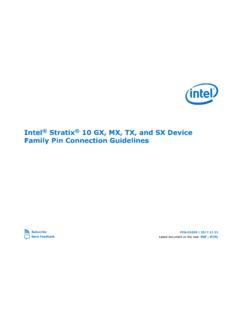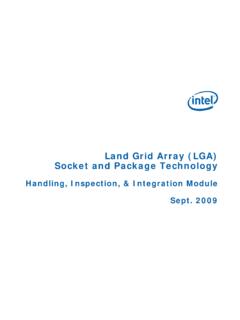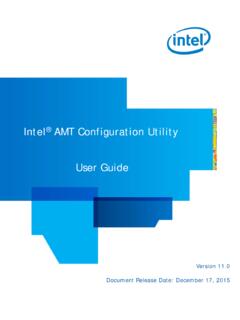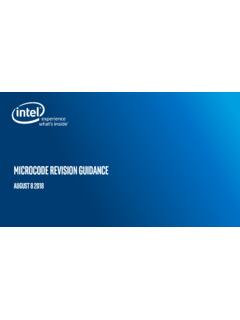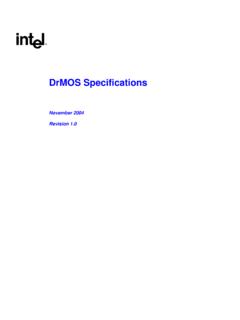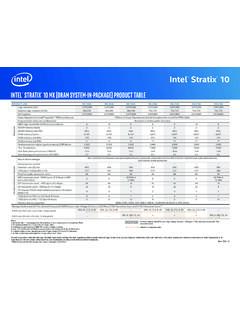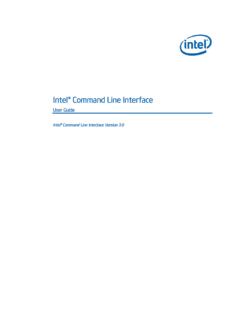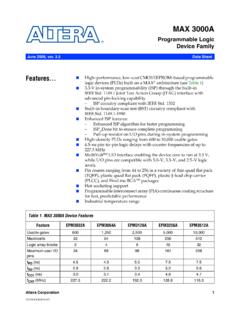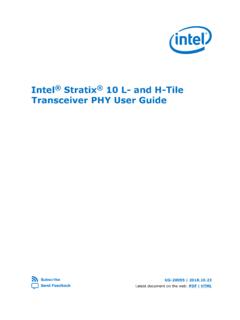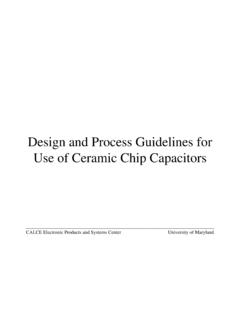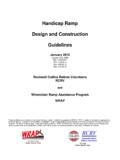Transcription of AN 592: Cyclone IV Design Guidelines - intel.com
1 August 2013 Altera CorporationAN 592: Cyclone IV Design August 2013AN 592: Cyclone IV Design GuidelinesThis application note provides an easy-to-use set of Guidelines and a list of factors to consider in Cyclone IV designs. Altera recommends following the Guidelines listed in this application note throughout the Design process. Altera Cyclone IV devices offer a rich combination of logic, memory, and digital signal processing (DSP) with the lowest power. Cyclone IV devices are ideally suited for cost-sensitive, high-volume applications, including displays, wireless infrastructure equipment, industrial Ethernet, broadcast converters, and chip-to-chip bridging.
2 Planning the FPGA and system early in the Design process is crucial to your success. This application note describes the Cyclone IV device architecture, as well as aspects of the Quartus II software and third-party tools that you can use in your Design . It does not include all the details about the product. It also refers to other documentation where you can find detailed specifications, device feature descriptions, and additional Guidelines presented in this application note can improve productivity and avoid common Design pitfalls.
3 Ta b l e 1 describes the various stages of the Design flow in the order that each stage is typically help verify that you have followed the Guidelines described in this application note, refer to the Design Checklist on page 52. fFor more information about the Cyclone IV device architecture, refer to the Literature: Cyclone IV Devices section of the Altera website. For the latest known issues related to Cyclone IV devices, refer to the Knowledge 1. Summary of Design Flow Stages and Guideline TopicsStages of Design FlowGuideline Topics System Specification on page 2 Planning Design specifications and IP selection Device Selection on page 3 Device information, determining device density, package offerings, migration, and speed grade Early System and Board Planning on page 6 Early power estimation, planning configuration scheme, and planning for on-chip debugging Pin Connection Considerations for Board Design on page 14 Power-up, power pins, PLL connections.
4 Decoupling capacitors, configuration pins, signal integrity, and board-level verification I/O and Clock Planning on page 23 Pin assignments, early pin planning, I/O features and connections, memory interfaces, clock and PLL selection, and simultaneous switching noise (SSN) Design Entry on page 35 Coding styles and Design recommendations, SOPC Builder, and planning for hierarchical or team-based Design Design Implementation, Analysis, Optimization, and Verification on page 42 Synthesis tool, device utilization, messages, timing constraints and analysis, area and timing optimization, compilation time, verification, and power analysis and optimizationPage 2 System SpecificationAN 592.
5 Cyclone IV Design Guidelines August 2013 Altera CorporationSystem SpecificationIn systems that contain a Cyclone IV device, the FPGA plays a large role in the overall system and affects the rest of the system Design . You must start the Design process by creating detailed Design specifications for the system and FPGA and determining the FPGA input and output interfaces to the rest of the system. Creating Design Specifications Before you create your logic Design or complete your system Design , detailed Design specifications should define the system, specify the I/O interfaces for the FPGA, identify the different clock domains, and include a block diagram of basic Design functions.
6 For suggestions about including intellectual property (IP) blocks, refer to IP Selection . Taking the time to create these specifications helps to improve Design efficiency. Create a functional verification plan to ensure your team knows how to verify the system. Creating a test plan at this stage also helps you Design for testability and manufacturability. You may need the ability to validate all the Design interfaces. For example, if you want to perform built-in-self-test functions to drive the interfaces, you can use an UART interface with a Nios II processor inside the FPGA device.
7 For Guidelines related to analyzing and debugging the device after it is in the system, refer to Planning for On-Chip Debugging on page your Design includes multiple designers, consider a common Design directory structure. This eases the Design integration stages. For more information about team-based designs, refer to Planning for Hierarchical and Team-Based Design on page Selection Altera and its third-party intellectual property partners offer a large selection of off-the-shelf IP cores optimized for Altera devices.
8 You can easily implement these parameterized blocks of IP in your Design , reducing your system implementation and verification time, and allowing you to concentrate on adding proprietary selection often affects system Design , especially if the FPGA interfaces with other devices in the system. Consider which I/O interfaces or other blocks in your system Design can be implemented using IP cores and plan to incorporate these cores in your FPGA Create detailed Design specifications and a test plan, if Plan clock domains, clock resources, and I/O interfaces early with a block SelectionPage 3 August 2013 Altera CorporationAN 592.
9 Cyclone IV Design GuidelinesThe OpenCore Plus feature available for many IP cores allows you to program the FPGA to verify your Design in the hardware before you purchase the IP license. The evaluation supports an untethered mode, where the Design runs for a limited time, or a tethered mode. The tethered mode requires an Altera serial JTAG cable connected between the JTAG port on your board and a host computer running the Quartus II Programmer for the duration of the hardware evaluation period. fFor more information about the available IP cores, refer to the Intellectual Property Solutions page on the Altera website.
10 Device SelectionThis section describes the first step in the Cyclone IV Design process choosing the device family variant, device density, features, package, and speed grade that best suit your Design requirements. Altera recommends targeting FPGA migration devices, which is also described in this section. fFor more information about the features available in each device density, including logic, memory blocks, multipliers, PLLs, package offerings, and I/O pin counts, refer to the Cyclone IV Device Family Overview chapter in volume 1 of the Cyclone IV Device Handbook.
